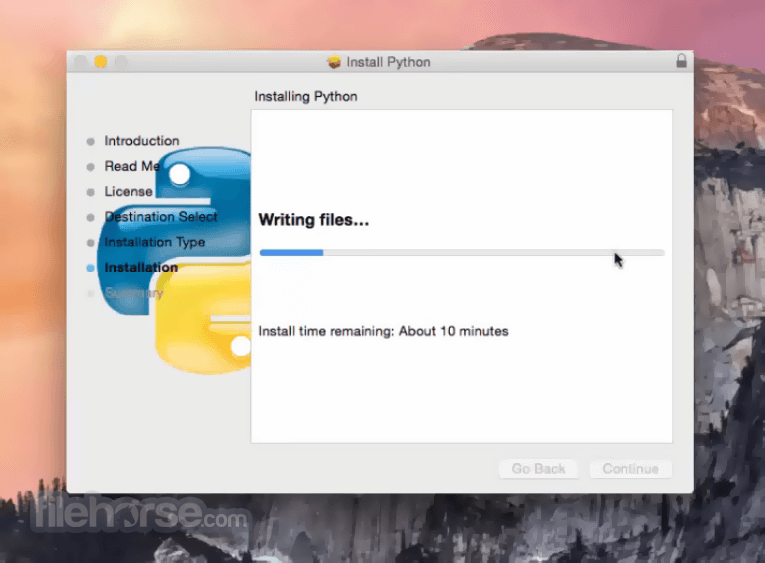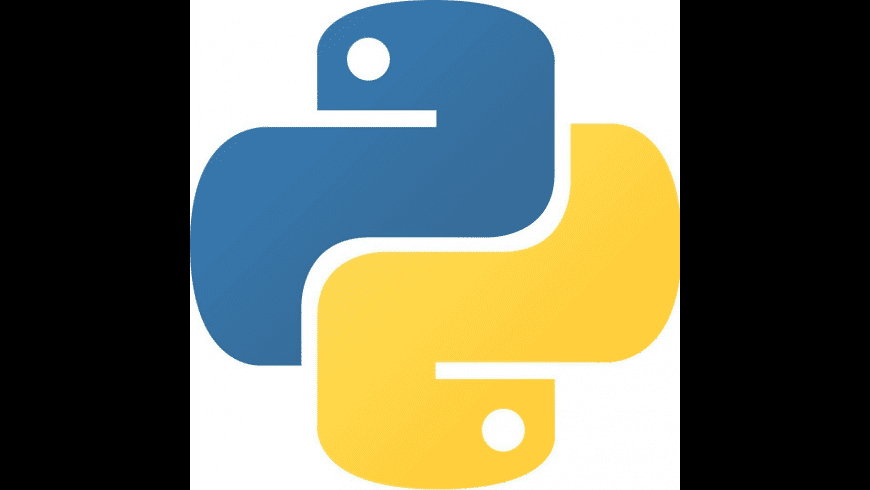Django is available open-source under the BSD license. We recommend using the latest version of Python 3. The last version to support Python 2.7 is Django 1.11 LTS. See the FAQ for the Python versions supported by each version of Django. Here’s how to get it:

Download Python 3.9 for Mac from our software library for free. Our built-in antivirus scanned this Mac download and rated it as virus free. The file size of the latest downloadable setup file is 26.6 MB. The program belongs to Developer Tools. The most popular versions of the program are 3.3, 2.7 and 2.6. Note that Python 3.6.11 cannot be used on Windows XP or earlier. No files for this release. Python 3.8.3 - May 13, 2020. Note that Python 3.8.3 cannot be used on Windows XP or earlier. Download Windows help file; Download Windows x86-64 embeddable zip file; Download Windows x86-64 executable installer; Download Windows x86-64 web-based installer.
Option 1: Get the latest official version
The latest official version is 3.1.3. Read the 3.1.3 release notes, then install it with pip:
Option 2: Get the latest development version
The latest and greatest Django version is the one that’s in our Git repository (our revision-control system). This is only for experienced users who want to try incoming changes and help identify bugs before an official release. Get it using this shell command, which requires Git:
git clone https://github.com/django/django.git
You can also download a gzipped tarball of the development version. This archive is updated every time we commit code.
After you get it
See the installation guide for further instructions. Make sure you read the documentation that corresponds to the version of Django you’ve just installed.
And be sure to sign up for the django-users mailing list, where other Django users and the Django developers themselves all hang out to help each other.
Supported Versions

Feature releases (A.B, A.B+1, etc.) will happen roughly every eight months. These releases will contain new features, improvements to existing features, and such.
Patch releases (A.B.C, etc.) will be issued as needed, to fix bugs and/or security issues. These releases will be 100% compatible with the associated feature release, unless this is impossible for security reasons or to prevent data loss. So the answer to 'should I upgrade to the latest patch release?” will always be 'yes.'
Certain feature releases will be designated as long-term support (LTS) releases. These releases will get security and data loss fixes applied for a guaranteed period of time, typically three years.
See the supported versions policy for detailed guidelines about what fixes will be backported.
| Release Series | Latest Release | End of mainstream support1 | End of extended support2 |
|---|---|---|---|
| 3.1 | 3.1.3 | April 2021 | December 2021 |
| 3.0 | 3.0.11 | August, 2020 | April, 2021 |
| 2.2 LTS | 2.2.17 | December 2, 2019 | April 2022 |
| 2.1 | 2.1.15 | April 1, 2019 | December 2, 2019 |
| 2.0 | 2.0.13 | August 1, 2018 | April 1, 2019 |
| 1.11 LTS 3 | 1.11.29 | December 2, 2017 | April 1, 2020 |
| 1.10 | 1.10.8 | April 4, 2017 | December 2, 2017 |
| 1.9 | 1.9.13 | August 1, 2016 | April 4, 2017 |
| 1.8 LTS | 1.8.19 | December 1, 2015 | April 1, 2018 |
| 1.7 | 1.7.11 | April 1, 2015 | December 1, 2015 |
| 1.6 | 1.6.11 | September 2, 2014 | April 1, 2015 |
| 1.5 | 1.5.12 | November 6, 2013 | September 2, 2014 |
| 1.4 LTS | 1.4.22 | February 26, 2013 | October 1, 2015 |
| 1.3 | 1.3.7 | March 23, 2012 | February 26, 2013 |
Here's what the future roadmap looks like:
| Release Series | Release Date | End of mainstream support1 | End of extended support2 |
|---|---|---|---|
| 3.2 LTS | April 2021 | December 2021 | April 2024 |
| 4.0 | December 2021 | August 2022 | April 2023 |
| 4.1 | August 2022 | April 2023 | December 2023 |
| 4.2 LTS | April 2023 | December 2023 | April 2026 |
[1] Security fixes, data loss bugs, crashing bugs, major functionality bugs in newly-introduced features, and regressions from older versions of Django.
[2] Security fixes and data loss bugs.
[3] Last version to support Python 2.7.
Mac OS X comes with Python 2.7 out of the box.
You do not need to install or configure anything else to use Python 2. Theseinstructions document the installation of Python 3.
The version of Python that ships with OS X is great for learning, but it’s notgood for development. The version shipped with OS X may be out of date from theofficial current Python release,which is considered the stable production version.
Doing it Right¶
Let’s install a real version of Python.
Before installing Python, you’ll need to install GCC. GCC can be obtainedby downloading Xcode, the smallerCommand Line Tools (must have anApple account) or the even smaller OSX-GCC-Installerpackage.
Note
If you already have Xcode installed, do not install OSX-GCC-Installer.In combination, the software can cause issues that are difficult todiagnose.
Note
If you perform a fresh install of Xcode, you will also need to add thecommandline tools by running xcode-select--install on the terminal.

While OS X comes with a large number of Unix utilities, those familiar withLinux systems will notice one key component missing: a package manager.Homebrew fills this void.
Python For Mac Os
To install Homebrew, open Terminal oryour favorite OS X terminal emulator and run
The script will explain what changes it will make and prompt you before theinstallation begins.Once you’ve installed Homebrew, insert the Homebrew directory at the topof your PATH environment variable. You can do this by adding the followingline at the bottom of your ~/.profile file
If you have OS X 10.12 (Sierra) or older use this line instead

Now, we can install Python 3:
This will take a minute or two.
Pip¶
Homebrew installs pip pointing to the Homebrew’d Python 3 for you.
Working with Python 3¶
At this point, you have the system Python 2.7 available, potentially theHomebrew version of Python 2 installed, and the Homebrewversion of Python 3 as well.
will launch the Homebrew-installed Python 3 interpreter.
will launch the Homebrew-installed Python 2 interpreter (if any).
will launch the Homebrew-installed Python 3 interpreter.
If the Homebrew version of Python 2 is installed then pip2 will point to Python 2.If the Homebrew version of Python 3 is installed then pip will point to Python 3.
The rest of the guide will assume that python references Python 3.
Pipenv & Virtual Environments¶
The next step is to install Pipenv, so you can install dependencies and manage virtual environments.
Python 3.8 Mac
A Virtual Environment is a tool to keep the dependencies required by different projectsin separate places, by creating virtual Python environments for them. It solves the“Project X depends on version 1.x but, Project Y needs 4.x” dilemma, and keepsyour global site-packages directory clean and manageable.
For example, you can work on a project which requires Django 1.10 while alsomaintaining a project which requires Django 1.8.

Python 3.7 Download Mac
So, onward! To the Pipenv & Virtual Environments docs!
Idle Python Mac Download
This page is a remixed version of another guide,which is available under the same license.
